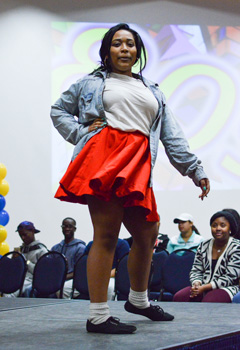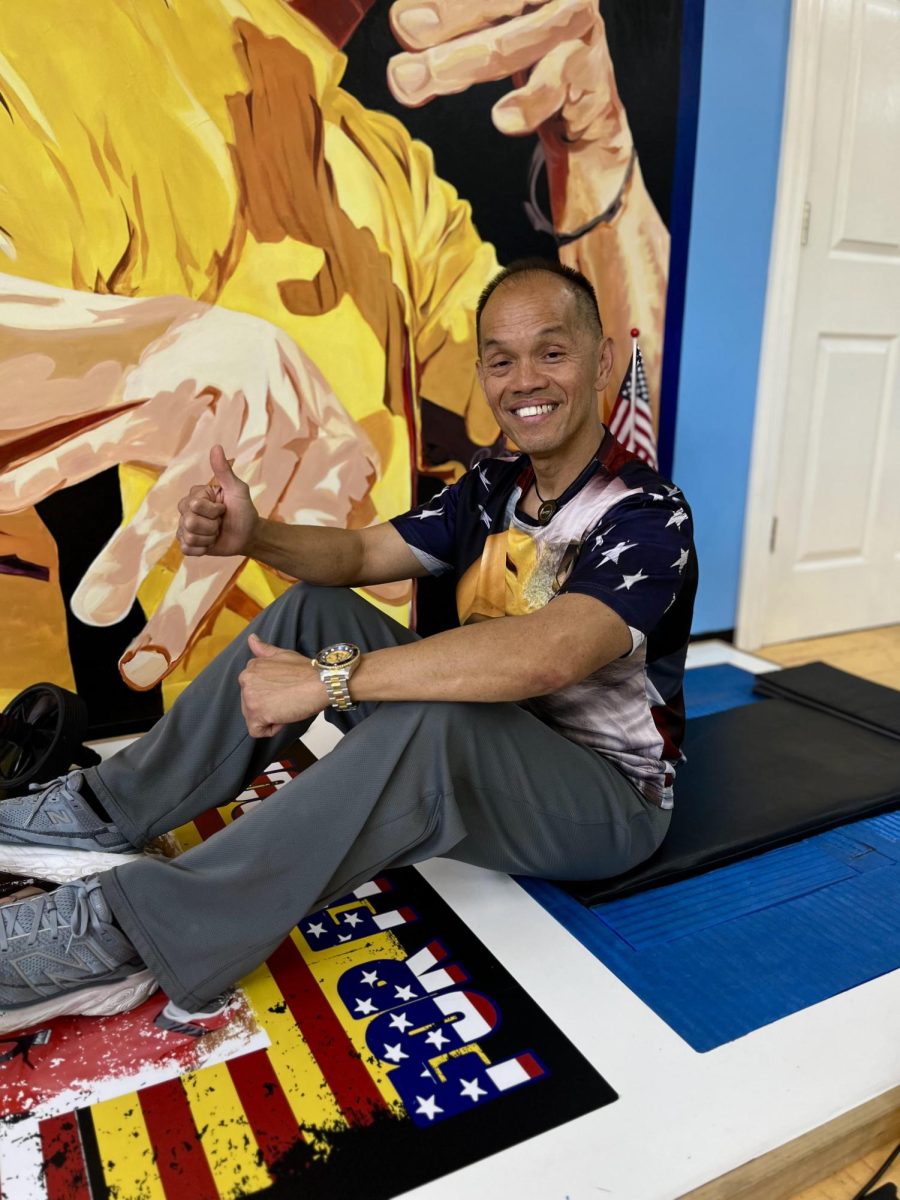Story by Brianna Willis, Staff writer

Taty Baker struts across the runway during the ‘Across he Decades’ fashion show.
The combination of February being designated Black History Month and the historic anniversary of desegregation on campus created the perfect conditions for celebrations to be held all month.
From Martin Luther King III’s Presidential Lecture, to the Black Student Council holding a Valentine’s Day Mixer and a Black Lives Matter panel hosted by the National Pan-Hellenic Council, February has been a time of great reflection.
Black History Month as a concept was created in 1926 by historian Carter G. Woodson as “Negro History Week.” Purposefully chosen to take place in February, as it coincided with Abraham Lincoln and Frederick Douglass’ birthdays. In 1976, it moved from a week to an entire month dedicated to the celebration of black history. Now, Black History Month is celebrated in other countries, such as Canada, which celebrated its 20th anniversary of adopting Black History Month this year.
During Martin Luther King III’s Presidential Lecture, he touched on this milestone and the progress, and rooms for improvement, the nation has faced. On a local level, he encouraged students to find something they were passionate about and be a change maker. He talked about racism he felt as a child and racism that can still be felt today. However, he was confident in this generation’s ability to affect change.
The National Pan-Hellenic Council hosted a panel discussion over the Black Lives Matter movement and racism in theory and practice. Ivy Anderson, senior from Memphis Tennessee, said that she is passionate about the movement and decided to attend the panel.
“I went because I was sitting in the Office [of Multicultural Affairs] and heard students discussing the panel and I really care about this movement so I went,” she said.
The discussion began with a conversation about institutionalized racism, then moved into topics such as “Do you experience racism on campus?” and “Is there a solution to combating racism?”
The final event celebrating Black History in February was held on Feb. 26 in the Curris Center Dance Lounge. Kiara Austin, senior from San Antonio hosted a “Through the Decades” fashion show, with the support of the Office of Multicultural Affairs.
Austin said the concept just came to her as she was going about her day. She said she saw on LinkedIn, a professional networking site, if you continue to think about something, just do it. Austin said she couldn’t let go of the idea so she approached S.G. Carthell, senior director of diversity initiatives, with her idea of a fashion show and he proposed incorporating it into the itinerary to celebrate the 60th school year since desegregation.
“Everybody likes to express themselves through clothes,” she said. “I think seeing what people used to wear and how people expressed themselves back then compared to now is intriguing to people.”
At the fashion show, Austin, who both planned and emceed the event, presented a fact about each decade. Models walked the runway, displaying personality not only through clothes but through their moves down the runway. Some danced, some strutted and some struck fierce poses at the end of the runway before walking back.
Nostalgia filled the air as music from each decade echoed throughout the room, keeping time with the models as they strutted across the runway. The entire event ran smoothly, with seamless transitions from decade to decade. A large screen projected images of the decade’s number in a pattern fitting of the era. The entire night was full of laughter, support and comradery. Audience members cheered on models as they sashayed; many took photos or clapped for their favorites.
During the show, there were two musical interludes, one an original rap performance titled “Conflict” from Darrian Dorrough, with background vocals from Alexandria Smith, and the other being Imani Oliver sang an acoustic cover of “A Change Is Gonna Come,” originally performed by Sam Cooke.
Austin said that celebrating these decade milestones and having events like the fashion show are important.
“We [African American students] don’t make up a large percentage of the student population, and events like these keep us from getting lost in the crowd,” she said. “This is an important milestone for us, and we want to celebrate it.”
However, Austin said that it is important for not only students of color to participate in these events, but for white students as well. Though the audience at the fashion show was comprised mostly of students of color, there were white students in attendance.
“It would be nice to have more events geared toward diversity,” Austin said. “Geared toward us, but for all students to come out and learn something or gain a new perspective on something.”




























































































